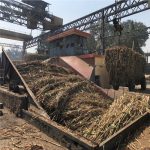Kamar Bakrin, the Executive Secretary of the National Sugar Development Council (NSDC), has outlined the ambitious requirements of the sugar master plan, stating that it will necessitate between 200,000 to 250,000 hectares of suitable land and an estimated $3.5 billion investment for the production of a minimum of 2 million metric tons of sugar, along with 400 MW of electricity generation, and the generation of 110,000 jobs spanning across the value-chain nationwide, reported The Nation.
Bakrin stated these details during the Sugar Industry Monitoring Group (SIMOG) meeting held in Abuja. He shared the performance evaluation of Phase I of the NSMP and presented the implementation roadmap for Phase II, underscoring the importance for operators, who are members of the group, to adhere to their commitments.
The government is poised to formally introduce Phase II of the Nigeria Sugar Master Plan (NSMP), with Bakrin assuring that the NSDC will play a pivotal role in propelling the industry towards its envisioned heights. He emphasized the government’s dedication to empowering host communities through various projects.
“This is a manifestation of President Ahmed Tinubu’s dedication to the NSMP objectives of achieving self-sufficiency in sugar production, job creation, and industrialization,” Bakrin stated. “A robust framework has been devised to monitor the performance of NSMP II by establishing clear targets and milestones over this period.”
He further added, “This monitoring mechanism ensures accountability and enables timely adjustments to optimize outcomes. Another crucial aspect the Council is addressing is the amendment of the NSDC Act to adequately support the sector’s growth and instill confidence in investors.”
The Sugar Industry Monitoring Group (SIMOG) comprises CEOs of all local sugar manufacturing companies. It functions as a peer review group, fostering the credibility of outcomes by validating performance data and providing a platform for sharing best practices and strategies to overcome implementation hurdles.












